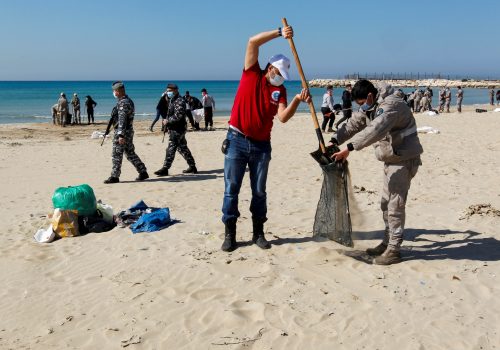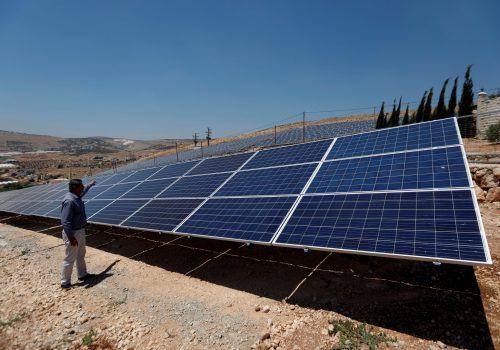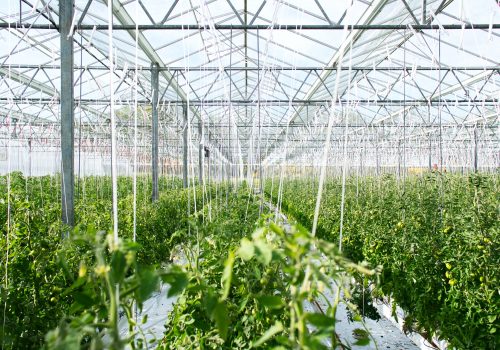Ensuring our energy security in a sustainable way in the MENA region and beyond
A fundamental challenge facing any government is ensuring its citizens’ basic energy needs are met without jeopardizing the living conditions for future generations. Indeed, this will be one of the key issues confronting the Joe Biden administration, which is seeking to rebuild an economy emerging from the COVID-19 pandemic while sparing no effort in the fight against climate change.
In our globalized world, providing energy needs and combating climate change will require cooperation across borders. If the Biden administration is to be successful in promoting affordable and cleaner sustainable energy at home and abroad, it will be critical to engage with partners across the globe, particularly in the Middle East, where much of the world’s oil is produced.
For example, engaging with resource-rich countries like Saudi Arabia will be important not only in the context of Saudi plans for cleaner fuels, such as hydrogen, but also in terms of Saudi willingness to curb oil production as part of the Biden administration’s global drive towards an energy transition, as Atlantic Council’s Director of the Scowcroft Middle East Security Initiative Kirsten Fontenrose has noted. A recent conversation I had with Bob McNally, former energy adviser to President George W. Bush, confirmed that Arab Gulf states like Saudi Arabia have the natural and financial resources, as well as the will to play a vital role in the energy transition.
In the first decade of the twenty-first century, nearly half of US electricity was generated from coal. Today, alternative, environmentally-friendly, and economically competitive sources of energy are readily available. Generating electricity from renewables is not just good for the planet—it is good business. Renewables, particularly solar panel prices, compete with Combined Cycle Gas Turbines (CCGT) prices, and there is a clear downward trend in cost compared to CCGT in the coming decades. Therefore, certain forms of fuel—such as coal and diesel—should be abolished immediately in the Middle East as sources for electricity generation, especially where alternative, less carbon-emitting sources of energy are available.
Moreover, as electricity grids are becoming innovated, in some countries, citizens have been seen choosing to pay more for their electricity if it is generated from greener, cleaner forms of electricity. This may not be surprising in Switzerland, but when the default electricity provided to consumers in the Middle East is mostly green, it will mark a fundamental shift for the better in the region.
A phased energy transition
Energy transition should not be seen in black and white terms. The reality is more complicated than that. In the past decade, solar panel and wind technologies have been leading the way. However, as more states in the Middle East consider adopting net-zero by 2050 targets—as is quickly becoming the standard among some of the globe’s most carbon-emitting countries—the limitations should be considered and addressed. For example, electricity intermittency issues connected with solar PV and wind can be improved with battery storage, but this technology is still expensive, and the technology is not yet at the stage to deliver at the required scale. Additionally, waste from the batteries used for storage and solar panel cells once the equipment is disposed of is something to consider as well. The End of Life disposal of solar panel waste is expected to be a critical environmental issue in the coming decades, which also needs to be addressed.
Making the leap in battery storage technology is where cutting-edge companies are looking to make breakthroughs. Through the years of limited and intermittent electricity supply, Gazans have been finding innovative ways of keeping the lights on—at least part time—for various domestic electricity needs through batteries. Perhaps the Gazan’s entrepreneurial spirit and innovative solutions can be built on for research and development, leading to technological breakthroughs.
Electric vehicles (EV) are also a step in the right direction for the region. For example, earlier this year, Schneider Electric Saudi Arabia signed a partnership with Saudi company IHCC, to increase the number of EV charging stations in Saudi Arabia, which is consistent with Saudi Vision 2030. There is also a surge of EVs in the development context. For example, Agence Française de Développement is facilitating the role of EV charging stations out in the Palestinian Territories. This is promising and will be optimal when the electricity supply for these chargers is from clean energy sources.
Additionally, as we transition from carbon intensive sources of fuel to greener energy, we will need to rely on natural gas as a transitional fuel—a significantly cleaner fuel than coal and diesel, especially in the developing world, with the Gaza Strip being a case in point. Indeed, in the International Energy Agency’s recently released Roadmap for the Global Energy Sector, the Middle East does not show a significant decrease in natural gas production even in the net-zero emissions by 2050 scenario. At this stage, hydrogen appears promising in moving from carbon intensive fuels and using existing gas infrastructures to transmit hydrogen gas. Countries such as Saudi Arabia and the United Arab Emirates (UAE) have made significant investments in both green and blue hydrogen plants, and the rest of the GCC is well-situated to join the energy trend. However, challenges remain regarding storage and pressure-enhancing mechanisms to ensure proper transmission using existing systems. In addition, hydrogen production remains prohibitively expensive with current technologies.
Other forms of clean energy include nuclear power, which will also play an increasing role where the technology is available, as seen from the recent drive in the UAE. It is noteworthy that strides are being made primarily in the wealthy Gulf countries in both hydrogen and nuclear power. In order for these technologies to impact the rest of the MENA region, particularly developing countries, financial and technological accessibility barriers will have to be addressed.
Think globally, act locally
Many of these issues will be best tackled at the local levels. With electricity production in much of the world being privatized, the thinking should shift from central regulation and electricity generation to empowering local actors to take the lead. In addition, electricity grids are becoming increasingly decentralized as distributed power enables customers to optimize from local renewable resources where possible.
Providing local solutions helps ensure that the local provision of basic services trumps national or international politics. To that end, however, it will be necessary for smart grids to be deployed. The residents of Israel’s Eilat and Jordan’s Aqaba, for example, may discover that they have more in common in terms of their energy needs and environmental concerns over the Gulf of Aqaba than with those of Jerusalem or Amman. Pollution in the Sea of Gaza, whether external or internal—due to an energy shortage for waste water treatment—means likely pollution in Israel’s Ashqelon or Tel Aviv.
Energy and sustainability policies should reflect transboundary sources and common challenges and not nationalism. Adopting such policies is the way forward.
Ariel Ezrahi is a nonresident senior fellow with the Atlantic Council’s Middle East Programs. He is also the Director of Energy at the Office of the Quartet in Jerusalem. Follow him on Twitter: @aezrahi.
Image: A Hydrogen powered car refuels at Hydrogen refuelling station during Saudi Aramco's media trip to demonstrate Hydrogen automotive technology at Techno Valley Science Park in Dhahran, Saudi Arabia, June 27, 2021. Picture taken June 27, 2021. REUTERS/Hajer Abdulmohsin


